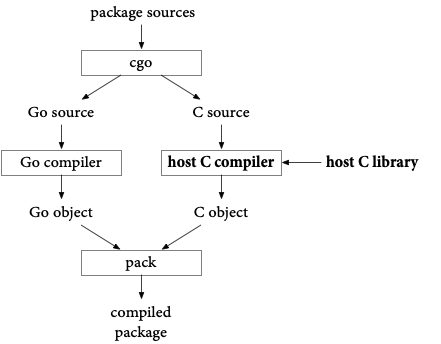Why Golang is Incredibly Fast: A Deep Dive
Go, commonly known as Golang, is celebrated for its speed and efficiency. Designed with simplicity and performance in mind, Go has become a go-to language for developers building high-performance systems. Let’s explore the key reasons why Golang is so fast.

1. Compiled Language
Go is a compiled language, which means the source code is translated directly into machine code that the computer's processor can execute. Unlike interpreted languages, which require a runtime to parse and execute code, compiled code runs natively on the hardware, eliminating overhead and making execution significantly faster.
2. Efficient Memory Management
Go’s garbage collector is optimized for low latency and high throughput. It efficiently manages memory by automatically freeing up unused resources while ensuring minimal disruption to program execution. This makes Go’s memory management both effective and fast, especially in applications with high concurrency.
3. Static Typing
Go’s statically typed nature allows the compiler to perform extensive checks at compile time. This eliminates many potential runtime errors and optimizes the code for performance. By knowing variable types beforehand, the compiler can generate highly optimized machine code.
4. Simplicity and Minimalism
Go is designed to be simple and minimalist, reducing unnecessary complexity in both the language and the resulting binaries. Its straightforward syntax leads to fewer abstractions, which translates into faster execution as the program’s behavior is easier to predict and optimize.
5. Concurrency Model
Go’s built-in support for concurrency, powered by goroutines and channels, enables efficient utilization of multiple CPU cores. Goroutines are lightweight threads managed by Go’s runtime, which can spawn thousands of concurrent tasks without significant overhead. This parallelism dramatically boosts the speed of I/O-bound and CPU-bound applications.

6. Efficient Standard Library
The Go standard library is optimized for performance, offering powerful and efficient tools for networking, I/O, and other essential operations. Instead of relying on external dependencies, Go’s built-in libraries are streamlined and battle-tested, reducing overhead and improving runtime efficiency.
7. Static Linking
Go binaries are statically linked, which means all dependencies are included within the executable. This eliminates the need for dynamic linking at runtime, reducing startup time and ensuring consistent performance across environments.
8. Optimized Compiler
The Go compiler is designed for speed and simplicity. It produces highly optimized machine code and supports features like:
- Inline function calls for reducing function call overhead.
- Escape analysis to allocate memory efficiently.
- Dead code elimination to exclude unnecessary code from the final binary.
9. No Virtual Machine (VM)
Unlike languages like Java or Python, Go does not rely on a virtual machine. The absence of a VM eliminates the interpretation and runtime overhead, resulting in faster execution.
10. Deterministic Performance
Go’s design philosophy prioritizes predictability. Features like the garbage collector, though automated, are designed to minimize unpredictable pauses. Developers can rely on Go’s consistent performance for building real-time and latency-sensitive applications.
KEY POINTS TO TAKE
- Golang’s speed is the result of its thoughtful design and engineering—from its compilation process to its memory management and concurrency model.
- Whether you’re building high-performance servers, scalable cloud services, or efficient command-line tools,
- Go’s unmatched speed and simplicity make it a top choice for developers worldwide.

.jpg)
.jpg)
.jpg)
.jpg)
.jpg)
.jpg)
.jpg)
.jpg)
